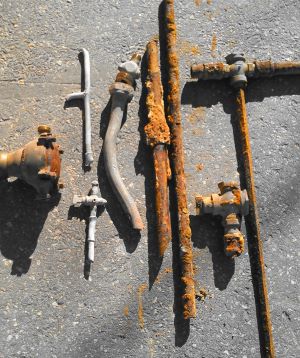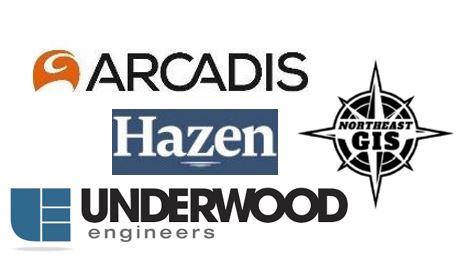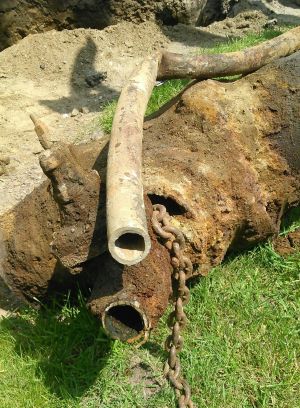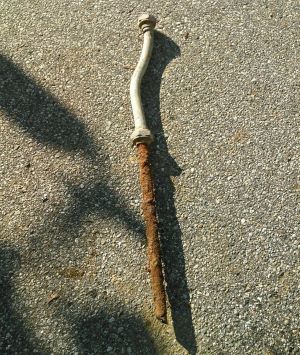Lead and Copper
Helping public water systems to comply with the EPA Lead and Copper Rule and its 2021 revisions.
The Environmental Protection Agency (EPA) established the Lead and Copper Rule (LCR) in 1991 to protect public health and reduce exposure to lead in drinking water. That rule has been revised effective December 16, 2021, to include several new actions to better protect the public against the harmful effects of lead.
The Lead and Copper Rule Revision (LCRR) from 2021 includes several new requirements, the most pressing one being requiring lead service line inventories. All community (CWS) and non-transient, non-community (NTNC) water systems are required to create an inventory of their service lines throughout their distribution systems, paying special attention to any lead service lines that will need to be replaced. CWS and NTNC are required to submit a service line inventory to NHDES by the federal deadline of October 16, 2024.
In December 2023 EPA released the Lead and Copper Rule Improvements (LCRI) which may shift certain deliverables of LCRR. The inventory requirement will not change. Continue working on your inventory and submit to NHDES by October 16, 2024. NHDES will communicate information as it becomes available.
Through the Bipartisan Infrastructure Law (BIL), Drinking Water State Revolving Loan Fund (DWSRF) funding is available to assist with lead service line replacements and inventories. For more information, please review the DWSRF LSLR Funding Flyer.
For more information on EPA's Lead and Copper Rule Revision, please see the NHDES LCRR Program Flyer or visit the EPA Revised Lead and Copper Rule webpage.
More Information
- LCRR Requirements
- Consulting Services
- Lead Funding Assistance
- Monitoring for Lead and Copper
- Corrosion Control
 Lead Service Line Inventory (LSLI), Replacement and Sampling Plans
Lead Service Line Inventory (LSLI), Replacement and Sampling Plans
The Lead and Copper Rule Revisions (LCRR) require all community water systems and non-transient non-community water systems to develop and submit to NHDES an inventory of service line materials and a proposed replacement plan for any lead and galvanized piping, for both utility and customer-owned sections. Each water system whose inventory has lead and/or galvanized piping is required to submit annual updates to NHDES. Based on the inventory results, new sampling sites must be proposed in accordance with the LCRR new sampling tiers.
Inventory information must be submitted to NHDES by the federal deadline of October 16, 2024. The Lead Service Line Inventory Template is the required format to submit inventory information and submittals can be sent anytime prior to the deadline to dwlead@des.nh.gov. For more information, contact heather.baron@des.nh.gov or (603) 271-5927.
 Small and Medium Systems
Small and Medium Systems
New Hampshire small and medium community (CWS) and non-transient non-community (NTNC) water systems with less than 1,700 service connections have been paired with one of four consulting firms to assist them in complying with EPA’s LCRR by the federal deadline of October 16, 2024. Arcadis, Hazen and Sawyer, Northeast GIS and Underwood Engineers are working directly with each water system to create and submit their service line inventory, replacement plan and sampling plan to NHDES by the federal deadline. Each consultant will be assisting their assigned water systems in gathering data and creating a plan to identify unknown service line materials and to replace any found lead lines.
There is no cost to the water systems for this assistance. Check your water system's assigned consultant. Please note newly activated or reclassified systems that are not included in the assigned consultants list are responsible for complying with LCRR as part of the design review process and will not be assigned a NHDES-hired consultant.
Please be reminded that complying with LCRR is ultimately the responsibility of the CWS and NTNC water system owner. Water system staff should be communicating to determine which individual is tasked with submitting data to your assigned consultant (or NHDES if you are not assigned a consultant).
If you have any questions or need more information, please contact DWLead@des.nh.gov or call (603) 271-2513.
To assist public water systems to comply with the LSLI requirements, NHDES is providing financial assistance through 100% federal, no-match grants to large systems, as well as free consulting services for small and medium systems. In addition, work related to LSL investigation and FULL service line replacements may be financed through the LEAD Drinking Water State Revolving Fund (DWSRF) with rolling, year-round applications and approximately 70% principal forgiveness. For more questions regarding lead in drinking water project funding, please review the DWSRF Lead Service Line Replacement (LSLR) Program Flyer or contact stephanie.h.nistico@des.nh.gov at (603) 271-2315.
Learn More About Lead Funding
- Large Public Water System Lead Service Line Inventory Grant – Large community public water systems serving ≥1700 service connections are eligible for this grant program. No match is required, and all eligible systems have been notified directly of this funding opportunity. LSL inventories, replacement and sampling plans are due by October 16, 2024.
- Lead Drinking Water State Revolving Fund (DWSRF) Loan Application – Eligible expenses include work related to LSL investigations and full-service line replacements. Authority to borrow is required. Applications are open year-round and provide approximately 70% loan forgiveness for eligible applicants.
- Small System Lead Service Line Inventory Consultants – New Hampshire small and medium water systems serving <1700 service connections have been paired with one of four consulting firms to develop and submit their LSLIs, replacements and sampling plans by October 16, 2024. See the "Consulting Services - Small and Medium Systems" tab for more information.
 NHDES may require that a water system undertake corrosion control activities if lead and/or copper are found at specific levels. The Lead and Copper Rule requires community and non-transient, non-community water systems to conduct tests to determine if lead and copper are present in high levels at the consumer's tap. The action levels are 0.015 milligrams per liter (mg/L) for lead and 1.3 mg/L for copper. Water systems are required to share the results of the lead samples with their consumers at the location where they were collected (known as Consumer Notification). The consumers need to be given information about the results, health effects, exposure routes and contact information. Water systems must also send a copy of the letter to NHDES and certify to this office that it was distributed in accordance with the rules. NHDES provides the following resources for public water systems:
NHDES may require that a water system undertake corrosion control activities if lead and/or copper are found at specific levels. The Lead and Copper Rule requires community and non-transient, non-community water systems to conduct tests to determine if lead and copper are present in high levels at the consumer's tap. The action levels are 0.015 milligrams per liter (mg/L) for lead and 1.3 mg/L for copper. Water systems are required to share the results of the lead samples with their consumers at the location where they were collected (known as Consumer Notification). The consumers need to be given information about the results, health effects, exposure routes and contact information. Water systems must also send a copy of the letter to NHDES and certify to this office that it was distributed in accordance with the rules. NHDES provides the following resources for public water systems:
- Sampling instructions.
- Notification letter template – to advise your consumers of their lead results.
- Forms and templates
Contact:
Bess Morrison
bess.a.morrison@des.nh.gov
(603) 271-0655
 Some water supplies require the use of corrosion control (CC) treatment to reduce water corrosivity to water mains and customer’s premise plumbing. Low pH or alkalinity and/or high chloride or conductivity are some of the characteristics of corrosive waters. Systems with CC treatment must monitor routine water quality (RWQ) parameters at least every two weeks at the distribution entry point and once per quarter at representative distribution sites. RWQ monitoring log sheets must be kept by the system and reported quarterly to NHDES upon trigger of either the lead (15 ppb) or copper (1.3 ppm) Action Level at the 90th percentile. Systems exceeding the Action Level must submit an Optimum Corrosion Control Treatment Report (OCCTR) within 6 months, implement the approved OCCTR within 1 year, and achieve two new compliant semi-annual LCR rounds within two years (system optimization) of the initial exceedance.
Some water supplies require the use of corrosion control (CC) treatment to reduce water corrosivity to water mains and customer’s premise plumbing. Low pH or alkalinity and/or high chloride or conductivity are some of the characteristics of corrosive waters. Systems with CC treatment must monitor routine water quality (RWQ) parameters at least every two weeks at the distribution entry point and once per quarter at representative distribution sites. RWQ monitoring log sheets must be kept by the system and reported quarterly to NHDES upon trigger of either the lead (15 ppb) or copper (1.3 ppm) Action Level at the 90th percentile. Systems exceeding the Action Level must submit an Optimum Corrosion Control Treatment Report (OCCTR) within 6 months, implement the approved OCCTR within 1 year, and achieve two new compliant semi-annual LCR rounds within two years (system optimization) of the initial exceedance.
Corrosion Control Resources
- 90th Percentile Calculation (Wisconsin Department of Natural Resources).
- Optimal Corrosion Control Treatment Report (OCCTR) template.
- Routine Water Quality (RWQ) sample log sheet.
- EPA (2016) Optimum Corrosion Control Guidance.
Contact:
Cindy Klevens
cynthia.m.klevens@des.nh.gov
(603) 271-2948




